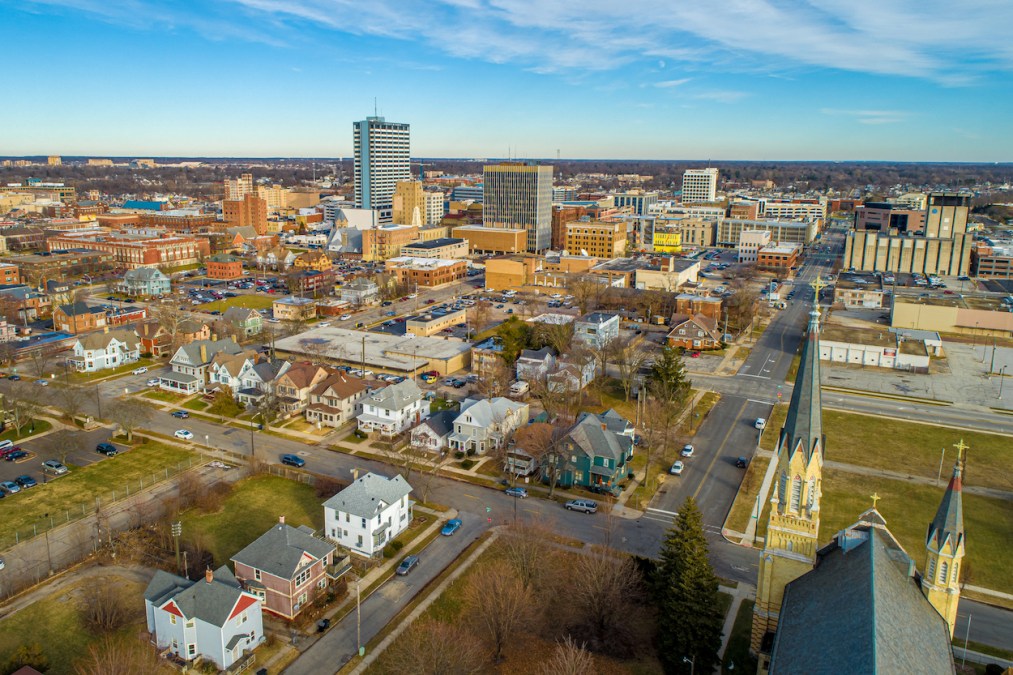South Bend, Indiana, finalizes ‘smart sewer’ plan after 5 years of retooling

After nearly five years of negotiations with federal and state agencies, officials in South Bend, Indiana, say a revised investment plan in “smart sewer” technology will help them save $437 million over the next 17 years.
The city finalized a deal earlier this month with the U.S. Environmental Protection Agency, Department of Justice and the Indiana Department of Environmental Management to continue using sensors built into its sewer lines that provide 15 million data points a year. The sensors have reduced the amount of E. coli in local rivers by 80% and are also a money-saver for the city, Eric Horvath, the city’s public works director, told StateScoop.
South Bend began placing sensors in its sewer system in 2008, independent of a push from the EPA around the same time to more strictly enforce the federal Clean Water Act. In 2007, Horvath said, the EPA and IDEM asked South Bend to come up with a “long-term control plan,” a 15-20 year plan to care for the sewer system while also reducing the amount of bacteria and sewage overflow into the city’s rivers. It took nearly four years for the city to agree on an environmental plan with the two environmental entities and the DOJ, Horvath said, with all parties ultimately agreeing on a sewer plan that would go into effect in 2012.
But the EPA and IDEM weren’t entirely sold on the city using its sensor technology to improve efficiency and reduce sewage overflow, Horvath said, so the plan wasn’t based on any data collected by the sensors. Just two years later, however, Horvath and his colleagues at the city realized that the agreed-upon plan would cost far too much for taxpayers, nearly $25,000 per household, and $713 million overall, to only partially reduce the number of sewer overflows by 2031.
“For a community that isn’t a wealthy … it just wasn’t going to work,” Horvath said.
Revising the plan
As a result, the city in 2014 began formulating a new, cheaper plan, Horvath said, flush with community input and consultations with environmental groups, that was more reliant on analyzing data from its underground sensor network.
“We were well into using the sensors and getting the data from them [by 2014],” Horvath said. “What we could show EPA, DOJ and IDEM right off the bat was that by doing the smart sewer stuff, we had much better results than they had anticipated we would have by then. We’d taken our overflows from more than two billion gallons per year to something 400 million gallons per year, about an 80% reduction in overflows just by using our initial sensor technology.”
That made selling a revised plan “a little easier,” Horvath said, because the state and federal regulators could see the quantifiable benefits. Though it took five years to get state and federal regulators on board with using the underground sensor network, Horvath said, the new deal will only cost $276 million and will run through 2038.
“[Regulators] were a little concerned because they didn’t want us to backslide on the environmental piece and when they saw we could do it for $276 million, they were somewhat shocked and didn’t believe we could have the same level of performance for that much less money,” Horvath said. “What happened was we actually ended up in the new plan having a much better level of control, so much better for the environment than the existing plan.”
‘Hyper-accurate’
The underwater sensor network the city is using, called Xylem, was developed by Notre Dame University engineering researchers and later commercialized with support from the state and Notre Dame’s IDEA Center, an entrepreneurial lab at the university. Once the sensors were put in the city’s underground waterways, they were able to remotely open and close sewer valves based on where water is flowing into the sewers and how high the water level is, Horvath said. That lets maintenance and sanitation workers know where blockages are and where they might be ahead of time.
But they can do more than that, he said — the sensors are precise enough that the city was able to increase the amount of water it pushed to its wastewater treatment center without accidentally forcing water into nearby rivers. A machine-learning model using data collected by the sensors, called a cognitive hydraulic response system, was “hyper-accurate” compared to previous calculations by city engineers, Horvath said.
“Right off the bat, we were able to do things much differently in our plan and rethink the plan because we had a much better understanding of what was going on underground than we used to have with the previous model. We had some pretty inaccurate guesses,” Horvath said.
The $276 million plan is currently in a 30-day public comment period before receiving final approval.




